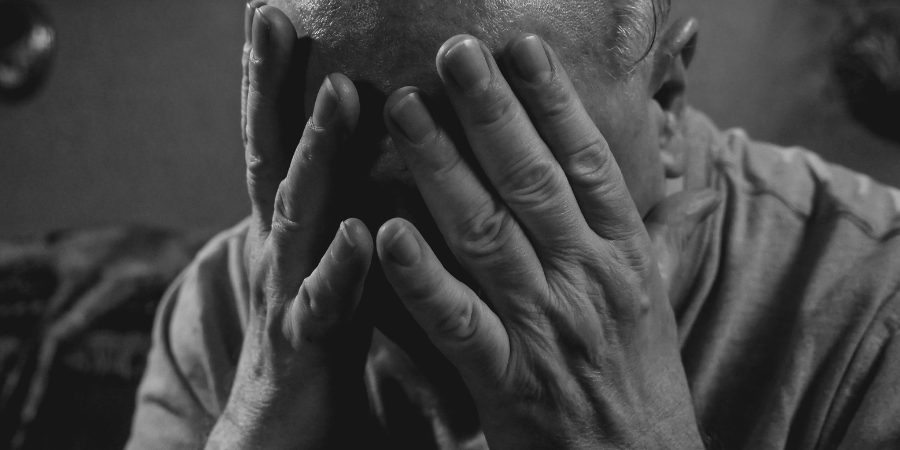Oxycontin withdrawal & detox

Written by:

Medically Reviewed by:
Last Updated:
August 8th, 2023
OxyContin is made from oxycodone, a synthetic opioid that comes in a variety of forms and doses and is often abused. When taken for extended periods of time, the chemical processes in the brain can change, and it becomes very difficult for individuals to come off the drug on their own without the appropriate medical supervision.
For this reason, it is recommended that those struggling with OxyContin addiction engage with Oxycontin detox, a process which rids all traces of the substance from your body, giving you the mental clarity necessary to engage with OxyContin rehab.

Why is OxyContin detox so challenging to undergo?
Whilst OxyContin can be a very effective painkiller; it also has a highly addictive potential. Exposure to OxyContin leads to tolerance, which in turn builds a decreased responsiveness to the drug and a need to take more to achieve the same effect. As a result, the body will essentially rely on Oxycontin to maintain a new balance. As people take more of the substance to compensate, it can reach a point where individuals are not even taking the drug to achieve a high anymore, but instead just to avoid becoming ill.
An individual who is reliant on OxyContin is at a disadvantage because, after prolonged use, their body no longer produces enough pain-regulating endorphins on its own, beginning to depend on the drug to stimulate their production. Take that stimulation away, and you create a problem that manifests itself through a variety of withdrawal symptoms.
There are also several psychological symptoms at play alongside OxyContin dependence, with individuals noting bouts of depression and acute anxiety after they have tried to come off the drug. When we consider these other symptoms associated with withdrawal, it is important to remember that detox is only effective for freeing the body from its physical reliance on OxyContin. Addressing the more underlying factors behind substance abuse can only be done through an intensive treatment programme.
Why do we go through withdrawal symptoms for Oxycontin?
The causes of OxyContin withdrawal are a direct result of the effect the drug has on the human body. Remember that OxyContin is a powerful opioid with sedating properties. It affects fundamental processes of brain function, muscle function, and even respiration.
Now, imagine OxyContin withdrawal is having your water supply cut off without warning. You are so used to drinking water to keep you healthy, hydrated, and satisfy your thirst. You do not know how you will adjust to life without water, feeling that life cannot continue as normal without it. A body withdrawing from OxyContin is in much the same position. It doesn’t know what to do without the drug it has come to depend on. As a result, the body must make certain adjustments to bring things back under control. This is what causes the symptoms of withdrawal.

What are Oxycontin withdrawal symptoms?
Without OxyContin, there are not enough endorphins to regulate pain signals, and muscle aches might begin to occur. Heavy breathing and a high heart rate are common reactions to the loss of sedation. Nausea and vomiting can arise as the gastrointestinal system is attempting to rebalance itself. Some other symptoms associated with OxyContin withdrawal include:
- Anxiety
- Muscle aches
- Insomnia
- Sweating
- Abdominal cramping
- Fatigue and exhaustion
While withdrawal from Oxycontin is not a particularly easy process, there are several strategies put in place by treatment providers to ensure both your safety and comfort throughout the journey. If you are considering OxyContin treatment, rest assured that patient health is always the number one priority for physicians. In a detox facility, for example, you might be weaned off the drug over a few weeks, or you could be given a substitute opioid drug to help lessen the harshness of symptoms.
How do I detox from OxyContin safely?
Choosing an environment to undergo detoxification from OxyContin can be a difficult decision to make. You may feel it is best to stay at home, a familiar environment where you can remain close to your friends and family as you undergo withdrawal. However, from all of us at UKAT, we would like to urge you to reconsider.
Detoxing from OxyContin can be an unpleasant ordeal and, if not overseen by medical professionals, can also be quite dangerous. The risk of OxyContin overdose, for example, is a very real and very serious concern. Like all opioids, OxyContin reduces both respiration and heart rate and, without supervision, has the potential to evoke life-threatening consequences.
The good news is that professional treatment is accessible. You do not have to go through OxyContin withdrawal alone, nor should you. A medically supervised OxyContin withdrawal is the safest and most effective way to get you through with your safety intact. Medical supervision minimises the risks associated with withdrawal and sets you up for successful therapies in the weeks that follow.
Medical OxyContin detox at UKAT facilities
In some detox clinics, medication might be used to replacement for OxyContin. This is known as medical detox. At UKAT centres, it is common practice for substitute drugs to be prescribed that can help to minimise the severity of the withdrawal symptoms that occur.
The introduction of another opioid will act on receptors in the brain that can help minimise the impact of OxyContin withdrawal, often preventing certain symptoms from occurring. While OxyContin is withdrawn, the substitute opioid is introduced in its place. Once you are free from OxyContin, the substitute can then be gradually reduced before dependence occurs.
Our experienced staff at UKAT are trained to provide you with the most easeful journey toward sober living, providing you with all the tools you need to stay healthy, safe, and free from OxyContin.

What are my next steps?
At UKAT, we like to think of OxyContin detox as a springboard to complete recovery. In other words, a comprehensive treatment plan starts with detox as its foundational first step. From there, patients can transition into psychotherapy and 12-step work. OxyContin detox is considered the springboard because, without it, the other treatments will be of little value.
OxyContin dependency is a condition that affects the body and mind and as such, completely overcoming the illness requires addressing the whole person. Detox addresses the physical aspect; workshops and therapies address the psychological and emotional aspects, with aftercare tying everything together to prevent relapse. At this point, it is necessary to recognise that a whole treatment plan encompasses everything necessary to help a person fully recover from OxyContin their condition. Holistic by default, comprehensive treatment is not fast and easy, but it takes time.
For this reason, we recommend clients embrace detox as part of a whole treatment plan that includes talking therapies and aftercare.
We are here to help
If you are already dependent on OxyContin, know that help is available. Our residential rehab clinics are highly qualified in medically assisted OxyContin detox, withdrawal, and immersive therapies. You can beat this illness, with the help of trained professionals whose number one priority is your recovery.
At UKAT, our aim is to help clients not just to get through OxyContin withdrawal but to begin to prepare for their lives after detox, surrounding them with a loving community of support and understanding.


